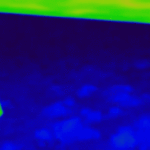
Должен ли дрон быть виден на спутниковом видео?
Похожие записи:
 «Спутники фиксируют, что в последние годы глобальная атмосфера быстро остывает». — Теге Торнвалл
«Спутники фиксируют, что в последние годы глобальная атмосфера быстро остывает». — Теге Торнвалл
 Исследование предполагает, что экзопланеты в системе Trappist-1 более пригодны для жизни, чем когда-то думали ученые | «На некоторых планетах очаровательной планетарной системы могла сохраниться вода»
Исследование предполагает, что экзопланеты в системе Trappist-1 более пригодны для жизни, чем когда-то думали ученые | «На некоторых планетах очаровательной планетарной системы могла сохраниться вода»
 У нас есть переключатель внутри нашего физического тела для противодействия стрессу.
У нас есть переключатель внутри нашего физического тела для противодействия стрессу.
 Джейн Гудолл выступает на ВЭФ. Нам нужно сократить население до того, что было 500 лет назад
Джейн Гудолл выступает на ВЭФ. Нам нужно сократить население до того, что было 500 лет назад
 Ранее на этой неделе видели недалеко от Луисвилля, штат Кентукки.
Ранее на этой неделе видели недалеко от Луисвилля, штат Кентукки.
 Что это в Нью-Йорке?
Что это в Нью-Йорке?
 Не обязательно Predator Drone. Новая перспектива.
Не обязательно Predator Drone. Новая перспектива.
 Канадцы за раскрытие информации об инопланетянах
Канадцы за раскрытие информации об инопланетянах
 «Мой отель с привидениями» Честера открывает двери для закоренелых скептиков
«Мой отель с привидениями» Честера открывает двери для закоренелых скептиков
 Пост о Россе, которому мы многим обязаны в этом году.
Пост о Россе, которому мы многим обязаны в этом году.

I think it’s been cropped deliberately right where we should be seeing it ?
Images synced from +8 seconds from Airliner first visible in IR video to when it crosses under the contrail. SAT video is at +8 seconds right before the first «mouse drag pan» toward the right.
From a «behavior» point of view, the range of the MQ drone from the airliner would be lighting up the TCAS (traffic collision avoidance system). The drone appears to be within RA (resolution advisory) typical envelope of less than 2.1nm / 25 seconds from target and also within the RA advisory altitude of distance less than 600 feet.
So in the cockpit, at this time, there are multiple collision avoidance alarms blasting. TCAS would be advising ‘Climb, Climb’ or ‘Descent, Descent’ or similar avoidance scheme. The Airliner appears to be in AP (auto pilot) mode with a heading change input (the angle of the bank and rate of the turn seems to be consistent with turning the HDG knob with altitude hold & auto throttle enabled and letting the AP bank the aircraft)
Based on the position of the Drone from the IR video, the airliner would have initiated the bank while an active TCAS alert is blasting with no altitude change (Drone seems to pass right under the contrail of the airliner so their respective altitude is quite similar) and also initiating a bank toward the flight path of the drone rather than away from it.
This is very odd behavior.
Those drones are running at 150KTAS max (Likely that the drone is moving much slower to improve loiter time). That plane is moving at least 400, maybe more(WISPR data). I asked the same question and i went through some calculations. That drone would be just out of view by a few miles and off angle. These drones have a max altitude of 28,000 feet. This is likely just under that.
400mph for a duration of 50 seconds = 5.56 miles
150KTAS for a duration of 50 seconds = 2.3 miles
​
It appears the drone is looking left as the plane banks so the bottom right hand picture would mean that drone is a lot further behind than the red line. A serious analysis would be needed. There is known airplane/drone length that can be applied. Also, the angle of the thermal and distance could be deceiving.
to my eyes the done would be higher than the area you circled in the satellite pic.
I basically said the same thing on the day the satellite video was shared around and people jumped on me to say that I didn’t know what I was talking about.
I have been waiting for someone else to say this 😂.
From what I was told then, all I got as a response was «FLIR is zoomed in» and thats pretty much it.
I have never seen it mentioned again.
I’m glad you made a side by side comparison, my only real opinion on this is that I feel like the curve on the FLIR side is still a bit more exaggerated than the curve we see on satellite. I think that the rest of the curve is hidden out of frame, but I could be wrong because I’m just going off a gut feeling of how drastic of a turn it looks like in the FLIR vs the more smooth turn in the satellite. I think it’s literally just barely out of frame up top.
when you do VFX or some CGI work that is not exactly paid you work smart, being a smart worker is usually in every decent artists tool box. you think about how to get the best result with least possible work. cropping the screen instead of having to deal with adding the drone seems like the right thing to do.
Yes absolutely it should, perhaps its a stealth drone?
Honestly this still alone debunks the whole thing. They do not mount the camera on the wing of the drone but the underside just below the face so to speak. Plus 80 other things that don’t track. Got too many I want to believe it’s real so it is kinda folks when it comes to this particular video subject.
The plane’s exhaust is not visibly hot in the thermal footage (planes have exhausts at the back that get very hot during flight)
2nd «satelite» video is bs since mh370 stopped responding 1 in the morning when it was pitch black outside.
thank you for coming to my TED Talk.
I’d say it really should be unless of course the drone has thermal optic camouflage, invisibility technology. Oh plot twist.
No, because it’s fake.